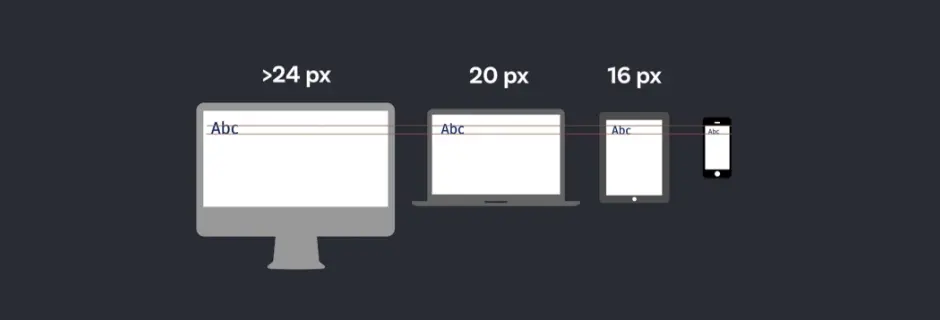In the ever-evolving landscape of the internet, the launch of a website is not the end of the journey but rather the beginning of an ongoing commitment. Website maintenance is the backbone of a successful online presence, ensuring that your digital space remains secure, functional, and user-friendly. Despite its paramount importance, many website owners find themselves entangled in common maintenance mistakes that can compromise performance and hinder user experience. In this comprehensive guide, we embark on a journey to unravel these pitfalls and provide you with actionable strategies on how to avoid them. By the end of this exploration, you’ll be equipped with the knowledge to navigate the intricate path of website maintenance, steering clear of obstacles and ensuring that your digital vessel sails smoothly.
The Importance of Website Maintenance
Imagine launching a state-of-the-art ship into the vast ocean. The initial construction is flawless, and the ship sets sail with great promise. However, without regular maintenance, the once-pristine vessel begins to face the relentless forces of nature — the corrosive saltwater, the wear and tear of constant movement, and the unpredictable weather patterns. Similarly, a website, no matter how well-designed initially, is subject to the ever-changing digital environment. Regular maintenance is the anchor that prevents it from drifting into treacherous waters.
Much like a car needs regular check-ups to prevent breakdowns, a website requires consistent maintenance to identify and rectify issues before they escalate. Neglecting this crucial aspect can lead to a host of problems, ranging from security vulnerabilities and performance issues to a decline in search engine rankings. In an era where online presence is synonymous with credibility, a poorly maintained website not only risks functionality but also jeopardizes the trust and satisfaction of its users.
Mistake #1: Inconsistent Backup Strategies
A pivotal error in website maintenance is the adoption of inconsistent backup strategies, where some website administrators neglect or sporadically manage crucial backup procedures. This mistake is often rooted in the assumption that occasional backups are sufficient, leading to potential consequences such as data loss, extended downtime, and damage to the website’s reputation.
The lack of regularity in performing backups poses a significant risk, as it increases the likelihood of losing valuable data and complicates the process of restoring the website to a specific point in time. Furthermore, the failure to test backups exacerbates the issue, as an untested backup may prove useless when needed.
Inconsistent backup strategies also manifest in the neglect of comprehensive backups, where essential files and databases are not consistently included. In the event of a critical failure, relying on incomplete backups may render the website in an unstable or unusable state, requiring additional resources and time for recovery.
Overlooking offsite backups is another aspect of this mistake, as storing backups in the same location as the website server exposes them to risks like natural disasters or server failures. Offsite backups are crucial for mitigating these external risks and ensuring accessibility when local servers are compromised.
To rectify this mistake, website owners should establish a regular backup schedule, conduct thorough testing of restoration procedures, and ensure that all essential files and databases are consistently included in backups. Implementing offsite backups and maintaining multiple versions of backups for versioning are also critical steps in building a resilient and reliable backup strategy. Regular review and updates of these strategies in response to changes in the website’s structure or content are essential for effective website maintenance.
Mistake #2: Ignoring Software Updates
An consequential mistake in website maintenance is the disregard for software updates, where some administrators overlook the critical role that timely updates play in enhancing security, functionality, and overall performance. This error often stems from a misconception that once a website is live, ongoing software updates are unnecessary.
The failure to regularly update software introduces significant risks, as outdated applications and plugins become susceptible to known vulnerabilities that can be exploited by malicious actors. Additionally, neglecting software updates can lead to compatibility issues with new technologies and features, hindering the website’s ability to adapt to evolving industry standards.
This mistake extends to content management systems, plugins, and themes, where the absence of updates may introduce bugs, compromise user experience, or even result in website downtime. The consequences of ignoring software updates are far-reaching, impacting not only the website’s security but also its overall functionality and reliability.
To rectify this oversight, website owners should prioritize a consistent and proactive approach to software updates. Regularly checking for updates, applying security patches promptly, and testing the compatibility of new releases in a staging environment before deploying them to the live site are essential practices.
Acknowledging the dynamic nature of software and technology and staying informed about the latest updates and security patches is crucial for maintaining a secure and high-performing website. By addressing this mistake, administrators can fortify their website against potential vulnerabilities, ensuring a resilient and up-to-date digital presence.
Mistake #3: Overlooking Broken Links and 404 Errors
A critical lapse in website upkeep is the neglect of broken links and 404 errors, where some administrators fail to recognize the impact of these issues on user experience, search engine rankings, and the overall credibility of the site.
This mistake often arises from the assumption that broken links are minor issues, overlooking the fact that they can lead to frustration among users and negatively impact the website’s SEO performance. Broken links, resulting from either moved or deleted pages, not only hinder navigation but also signal to search engines that the site may be outdated or poorly maintained.
The consequences of overlooking broken links and 404 errors extend beyond user frustration to potential harm to the site’s search engine visibility. Search engines prioritize websites with clean, error-free structures, and the presence of broken links can result in a decline in rankings.
To rectify this mistake, administrators should implement regular link audits using tools that identify and address broken links and 404 errors. Establishing proper redirects for moved or deleted pages and updating internal and external links contribute to a seamless user experience and positively impact search engine optimization.
Proactive monitoring and prompt correction of broken links are essential for preserving user satisfaction, search engine rankings, and the overall health of the website. By addressing this oversight, administrators can ensure a smoother and more reliable browsing experience for visitors while maintaining a favorable standing in search engine results.
Mistake #4: Neglecting Mobile Responsiveness
A pivotal error in website upkeep is the neglect of mobile responsiveness, where some administrators fail to grasp the growing significance of catering to users on various devices, particularly mobile devices. This oversight stems from the misconception that a desktop-centric design is sufficient for delivering an optimal user experience.
Neglecting mobile responsiveness can lead to suboptimal user experiences, higher bounce rates, and a decline in search engine rankings, as search engines prioritize mobile-friendly websites. The mistake extends to overlooking the optimization of images, text, and interactive elements for smaller screens, compromising functionality and aesthetics on mobile devices.
To address this oversight, website owners should prioritize responsive design to ensure that their sites adapt seamlessly to different screen sizes. Regular testing on various devices and browsers is essential for identifying and rectifying any responsiveness issues that may arise.
Investing in a mobile-friendly user interface not only enhances the overall user experience but also aligns the website with contemporary design standards, contributing to improved search engine rankings and sustained user satisfaction. Recognizing the importance of mobile responsiveness and incorporating it into website maintenance practices is crucial for maintaining a competitive and user-friendly online presence.
Mistake #5: Poor Content Management
A significant oversight in website maintenance revolves around poor content management practices. Some website owners underestimate the impact of outdated, irrelevant, or disorganized content on user engagement, search engine rankings, and the overall brand image.
Neglecting content management can result in a cluttered and confusing user experience, leading to higher bounce rates and diminished visitor retention. This occurs when users encounter stale or irrelevant information, discouraging them from exploring the site further. Moreover, search engines favor websites with fresh, valuable content, and neglecting regular updates may adversely affect SEO performance. This oversight can lead to a decline in search rankings, making it harder for potential visitors to discover the site.
The mistake of poor content management extends to inconsistent branding, formatting issues, and neglecting multimedia elements. Inconsistencies in branding can create a disjointed and unprofessional image, eroding the trust and credibility that a well-managed online presence can build. Additionally, formatting issues and neglecting multimedia elements contribute to an unappealing visual presentation, further detracting from the user experience.
To rectify this, website administrators should implement a robust content management strategy. Regular content audits are essential to identify and update outdated information while removing obsolete or irrelevant content. Adopting a content calendar can help ensure a steady stream of fresh and relevant content, providing visitors with a reason to return regularly. Furthermore, optimizing multimedia elements, improving readability, and maintaining a cohesive brand voice contribute to a more polished and user-friendly website.
Prioritizing content management not only enhances the site’s overall appeal but also positively impacts search engine rankings, user engagement, and the credibility of the online presence. By addressing these content-related issues, website owners can create a more compelling and reliable digital space for their audience.
Mistake #6: Underestimating Website Security
Underestimating the importance of robust website security is a critical oversight in website maintenance. Some website owners fail to recognize the ever-present threat of cyberattacks and the potential consequences of compromised security. Neglecting security measures can expose the website to various risks, including data breaches, unauthorized access, and disruptions in service.
The mistake often begins with the assumption that basic security measures are sufficient, overlooking the evolving nature of cyber threats. Outdated software, plugins, and themes with known vulnerabilities become easy targets for malicious actors. Additionally, weak or reused passwords and the lack of multi-factor authentication further exacerbate the vulnerability of the website.
Underestimating website security not only puts sensitive user data at risk but also damages the website’s reputation. A security breach can lead to loss of trust among visitors and clients, resulting in long-term consequences for the business.
To address this mistake, website administrators should prioritize a comprehensive security strategy. Regularly updating software and plugins, employing robust authentication practices, and conducting security audits are fundamental steps. Implementing an SSL certificate for secure data transmission and employing a web application firewall add extra layers of protection. Regular monitoring for suspicious activities and having a response plan in case of a security incident are equally crucial.
Educating staff and users about best security practices and staying informed about the latest cybersecurity threats also contribute to a more resilient security posture. Underestimating website security is a risk that no website owner can afford, and by taking proactive measures, they can safeguard sensitive information, maintain user trust, and ensure the overall integrity of their digital presence.
Mistake #7: Not Monitoring Website Performance
A significant error in website maintenance is the failure to adequately monitor website performance. Some website administrators underestimate the importance of regular performance evaluations, hindering their ability to identify and address issues that can impact user experience and overall site functionality.
The mistake often stems from the assumption that once a website is live, it will inherently perform optimally. However, factors such as increased traffic, changes in user behavior, or issues with hosting infrastructure can affect performance over time.
Neglecting performance monitoring can lead to various problems, including slow page load times, increased bounce rates, and a decline in search engine rankings. Users expect fast and responsive websites, and any lag or delay can result in a negative perception of the site.
To rectify this oversight, website administrators should implement robust performance monitoring practices. This involves regularly checking page load times, server response times, and overall site speed. Utilizing performance monitoring tools and services can provide valuable insights into website metrics and help identify areas for improvement.
Additionally, monitoring user interactions, such as click-through rates and conversion rates, contributes to a comprehensive understanding of how visitors are engaging with the site. Addressing performance issues promptly not only improves user satisfaction but also positively impacts search engine optimization, as search engines prioritize fast and efficient websites.
In conclusion, not monitoring website performance is a mistake that can have tangible consequences on user experience and overall site success. By adopting a proactive approach to performance monitoring, website administrators can ensure optimal functionality, responsiveness, and user satisfaction, ultimately contributing to the long-term success of their online presence.
Mistake #8: Neglecting SEO Maintenance
A critical oversight in website maintenance is the neglect of ongoing Search Engine Optimization (SEO) efforts. Some website owners fail to recognize that SEO is not a one-time task but an ongoing process crucial for maintaining visibility and competitiveness in search engine results.
This mistake often stems from the misconception that achieving good rankings in search engines is a set-it-and-forget-it task. However, search engine algorithms evolve, user behaviors change, and competitors adjust their strategies. Neglecting SEO maintenance can result in a gradual decline in rankings, reducing the site’s visibility to potential visitors.
The consequences of this mistake extend beyond rankings; they impact organic traffic, user engagement, and overall online presence. Inconsistent or outdated SEO practices may lead to missed opportunities for reaching the target audience.
To rectify this, website administrators should prioritize regular SEO maintenance. This involves staying informed about industry trends, algorithm updates, and adjusting strategies accordingly. Conducting regular keyword research, optimizing on-page elements, and improving the site’s backlink profile contribute to sustained visibility.
Additionally, monitoring website analytics to understand user behavior and adjusting content strategies based on insights is essential. Neglecting SEO maintenance not only affects search engine rankings but also hinders the site’s ability to adapt to changing user expectations and industry trends.
In summary, neglecting SEO maintenance is a mistake that can erode the online visibility and competitiveness of a website over time. By embracing ongoing SEO efforts, website owners can ensure that their site remains optimized for search engines, attracting organic traffic and maintaining a strong digital presence in an evolving online landscape.
Mistake #9: Lack of a Disaster Recovery Plan
A crucial oversight in website maintenance is the absence of a comprehensive disaster recovery plan. Some website administrators underestimate the potential impact of unforeseen events such as server failures, cyberattacks, or natural disasters. Failing to have a well-defined recovery strategy in place can lead to extended downtime, data loss, and irreparable damage to the website’s reputation.
The mistake often arises from the assumption that disasters won’t happen or that basic backup procedures are sufficient for recovery. However, without a structured plan, the response to a critical incident can be chaotic, leading to prolonged service interruptions.
The consequences of neglecting a disaster recovery plan extend beyond immediate downtime. It can result in the loss of valuable data, customer trust, and even legal repercussions if sensitive information is compromised.
To address this, website administrators should prioritize the development and implementation of a robust disaster recovery plan. This involves identifying potential risks, establishing backup procedures, and defining a step-by-step recovery process. Offsite storage of backups, regular testing of recovery procedures, and collaboration with hosting providers are essential components of a comprehensive disaster recovery strategy.
Moreover, communication protocols should be established to keep stakeholders informed during an incident. Without a well-prepared disaster recovery plan, the aftermath of an unforeseen event can be more damaging than the event itself.
In conclusion, the lack of a disaster recovery plan is a mistake that can have severe consequences for a website. By proactively developing and regularly updating a comprehensive recovery strategy, administrators can minimize downtime, protect critical data, and ensure a swift and efficient response to unforeseen events, safeguarding the website’s resilience and reputation.
Mistake #10: Overlooking User Feedback
A significant oversight in website maintenance is the failure to prioritize and act upon user feedback. Some website owners underestimate the value of insights provided by their audience, missing out on opportunities to enhance user experience, identify issues, and adapt to changing preferences.
This mistake often originates from the assumption that the website’s design and functionality align perfectly with user expectations. However, user feedback is a valuable resource for understanding how visitors interact with the site, what works well, and where improvements are needed.
Neglecting user feedback can lead to missed opportunities for growth, as user perspectives provide valuable insights into areas such as navigation, content relevance, and overall satisfaction. Additionally, users appreciate being heard, and actively seeking and responding to their feedback fosters a sense of community and loyalty.
To rectify this, website administrators should establish channels for collecting and analyzing user feedback. This can include surveys, feedback forms, and monitoring social media channels for comments and discussions. Regularly reviewing this feedback and implementing relevant suggestions demonstrates a commitment to continuous improvement.
Moreover, user feedback can unveil emerging trends and help prioritize future development efforts. Ignoring this valuable resource not only hinders user satisfaction but also limits the website’s ability to evolve in response to user needs and preferences.
In summary, overlooking user feedback is a mistake that denies websites the opportunity to cultivate a user-centric approach. By actively seeking, listening to, and acting upon user feedback, website administrators can foster a positive user experience, build user loyalty, and position their site for sustained success in a dynamic online landscape.
Conclusion
As we conclude our exploration of common website maintenance mistakes, it’s essential to recognize that the journey doesn’t end here. Sustaining a healthy website requires ongoing dedication to best practices, staying informed about industry trends, and adapting to the evolving digital landscape. By steering clear of the pitfalls outlined in this guide and implementing proactive maintenance strategies, you ensure that your digital vessel not only stays afloat but thrives in the vast and competitive ocean of the internet.
As we wrap up this guide on website maintenance, remember that taking care of your site is like sailing the internet seas. If you want a reliable crew for your digital ship, consider Altin Design. We’re experts in keeping websites shipshape and secure. Our team is here to tackle the challenges we’ve talked about and ensure your site stays smooth sailing. Ready for a worry-free online journey? Check out our website maintenance and support services now.






